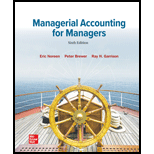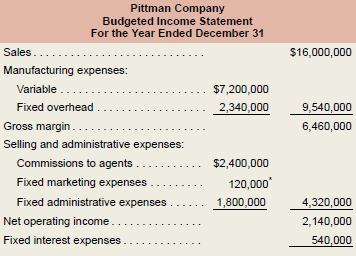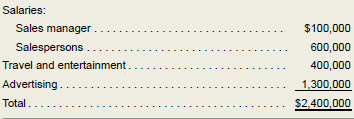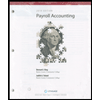
Concept explainers
Pittman Company is a small but growing manufacturer of telecommunications equipment. The company has no sales force of itsown; rather, it relies completely on independent sales agents to market its products. These agents are paid a sales commission of15% for all items sold.
Barbara Cheney, Pittman’s controller, just prepared the company’s


As Barbara handed the statement to Karl Vecci, Pittman’s president, she commented, “I went ahead and used the agents’ 15%commission rate in completing these statements, but we’ve just learned that they refuse to handle our products next year unless we increase the commission rate to 20%.”
“That’s the last straw,” Karl replied angrily. “Those agents have been demanding more and more, and this time they’ve gone too far. How can they possibly defend a 20% commission rate?”
“They claim that after paying for advertising, travel, and the other costs of promotion, there’s nothing left over for profit,” replied Barbara.
“I say it’s just plain robbery,” retorted Karl. “And I also say it’s time we dumped those guys and got our own sales force. Can you get your people to work up some cost figures for us to look at?”
“We’ve already worked them up,” said Barbara. “Several companies we know about pay a 7.5% commission to their own sales people, along with a small salary. Of course, we would have to handle all promotion costs, too. We figure our fixed expenses would increase by $2,400,000 per year, but that would be more than offset by the $3,200,000 (20% Ă— $16,000,000) that we would avoid on agents’ commissions.”
The breakdown of the $2,400,000 cost follows:

“Super,” replied Karl. “And I noticed that the $2,400,000 equals what we’re paying the agents under the old 15% commission rate.”
“It’s even better than that,” explained Barbara. “We can actually save $75,000 a year because that’s what we’re paying our auditors to check out the agents’ reports. So our overall administrative expenses would be less.”
“Pull all of these numbers together and we’ll show them to the executive committee tomorrow,” said Karl. “With the approval of the committee, we can move on the matter immediately.”
Required:
- Compute Pittman Company’s break-even point in dollar sales for next year assuming:
- The agents’ commission rate remains unchanged at 15%.
- The agents’ commission rate is increased to 20%.
- The company employs its own sales force.
- Assume Pittman Company decides to continue selling through agents and pays the 20% commission rate. Determine the dollar sales required to generate the same net income as contained in the budgeted income statement for next year.
- Determine the dollar sales at which net income would be equal regardless of whether Pittman Company sells through agents (at a20% commission rate) or employs its own sales force.
- Compute the degree of operating leverage the company would expect to have at the end of next year assuming:
- The agents’ commission rate remains unchanged at 15%.
- The agents’ commission rate is increased to 20%.
- The company employs its own sales force.
- Based on the data in (1) through (4) above, make a recommendation as to whether the company should continue to use sales agents (at a 20% commission rate) or employ its own sales force. Give reasons for your answer.
Use income before income taxes in your operating leverage computation.
Want to see the full answer?
Check out a sample textbook solution
Chapter 2 Solutions
Loose Leaf For Managerial Accounting for Managers
- I need help finding the accurate solution to this general accounting problem with valid methods.arrow_forwardPlease provide the accurate answer to this financial accounting problem using valid techniques.arrow_forwardSynergy Works had a Work-in-Process balance of $160,000 on January 1, 2023. The year-end balance of Work-in-Process was $142,000, and the Cost of Goods Manufactured was $795,000. Use this information to determine the total manufacturing costs incurred during the fiscal year 2023.arrow_forward
- Nonearrow_forwardAssume that in 2022, the federal government of Arcadia Republic spent $920 billion and collected $780 billion in taxes. In 2023, government spending increased to $950 billion, while government revenue also increased to $1,050 billion. If the government debt was $7.8 trillion at the beginning of 2022, what will it be at the end of 2023?arrow_forwardProblem related to Accountingarrow_forward

 Cornerstones of Cost Management (Cornerstones Ser...AccountingISBN:9781305970663Author:Don R. Hansen, Maryanne M. MowenPublisher:Cengage Learning
Cornerstones of Cost Management (Cornerstones Ser...AccountingISBN:9781305970663Author:Don R. Hansen, Maryanne M. MowenPublisher:Cengage Learning Auditing: A Risk Based-Approach (MindTap Course L...AccountingISBN:9781337619455Author:Karla M Johnstone, Audrey A. Gramling, Larry E. RittenbergPublisher:Cengage Learning
Auditing: A Risk Based-Approach (MindTap Course L...AccountingISBN:9781337619455Author:Karla M Johnstone, Audrey A. Gramling, Larry E. RittenbergPublisher:Cengage Learning Managerial AccountingAccountingISBN:9781337912020Author:Carl Warren, Ph.d. Cma William B. TaylerPublisher:South-Western College Pub
Managerial AccountingAccountingISBN:9781337912020Author:Carl Warren, Ph.d. Cma William B. TaylerPublisher:South-Western College Pub



